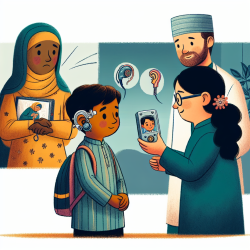Understanding the Implications of Egyptian H5N1 Influenza Research for Speech-Language Pathology
The recent study titled "Risk assessment of recent Egyptian H5N1 influenza viruses" provides critical insights into the transmissibility and potential pandemic threat posed by these viruses. As professionals dedicated to improving pediatric outcomes, it is crucial for speech-language pathologists to understand the broader health context in which we operate. This knowledge can enhance our preparedness and response strategies, particularly in environments such as schools where children are at risk of infectious diseases.
Key Findings from the Research
The study assessed nine Egyptian H5N1 influenza viruses, revealing that some strains can transmit via respiratory droplets in ferrets, a model for human transmission. This finding, although not consistently reproducible, highlights the potential for these viruses to adapt and pose a pandemic threat. Importantly, all isolates were sensitive to neuraminidase inhibitors, suggesting that antiviral treatments remain effective.
Implications for Speech-Language Pathologists
Understanding the dynamics of infectious diseases like H5N1 is essential for speech-language pathologists, particularly those working in school settings. Here are some key takeaways:
- Enhanced Vigilance: Recognizing the signs of influenza and understanding transmission dynamics can help in early identification and intervention, reducing the spread within schools.
- Preparedness Plans: Developing and implementing robust infection control protocols is vital. This includes promoting good hygiene practices and possibly adapting therapy sessions to minimize close contact during outbreaks.
- Interdisciplinary Collaboration: Working closely with healthcare providers, educators, and parents to ensure a coordinated response to potential outbreaks.
- Continued Education: Staying informed about the latest research and public health guidelines to adapt practices accordingly.
Encouraging Further Research
The study underscores the need for ongoing research into the transmission and evolution of H5N1 viruses. Speech-language pathologists can contribute by participating in interdisciplinary research initiatives that explore the impact of infectious diseases on communication disorders and therapy outcomes.
Conclusion
As we strive to create positive outcomes for children, integrating findings from studies like the Egyptian H5N1 influenza research into our practice is essential. By doing so, we enhance our ability to protect and support the children we serve, ensuring that they continue to thrive in a safe and healthy environment.
To read the original research paper, please follow this link: Risk assessment of recent Egyptian H5N1 influenza viruses.










